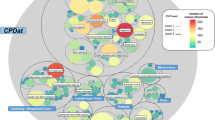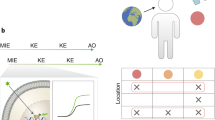Abstract
Assessing human exposures to chemicals in consumer products requires composition information. However, comprehensive composition data for products in commerce are not generally available. Many consumer products have reported ingredient lists that are constructed using specific guidelines. A probabilistic model was developed to estimate quantitative weight fraction (WF) values that are consistent with the rank of an ingredient in the list, the number of reported ingredients, and labeling rules. The model provides the mean, median, and 95% upper and lower confidence limit WFs for ingredients of any rank in lists of any length. WFs predicted by the model compared favorably with those reported on Material Safety Data Sheets. Predictions for chemicals known to provide specific functions in products were also found to reasonably agree with reported WFs. The model was applied to a selection of publicly available ingredient lists, thereby estimating WFs for 1293 unique ingredients in 1123 products in 81 product categories. Predicted WFs, although less precise than reported values, can be estimated for large numbers of product–chemical combinations and thus provide a useful source of data for high-throughput or screening-level exposure assessments.
This is a preview of subscription content, access via your institution
Access options
Subscribe to this journal
Receive 6 print issues and online access
$259.00 per year
only $43.17 per issue
Buy this article
- Purchase on Springer Link
- Instant access to full article PDF
Prices may be subject to local taxes which are calculated during checkout





Similar content being viewed by others
References
Isaacs KK, Glen WG, Egeghy P, Goldsmith MR, Smith L, Vallero D et al. SHEDS-HT: an integrated probabilistic exposure model for prioritizing exposures to chemicals with near-field and dietary sources. Environ Sci Technol 2014; 48: 12750–12759.
Van Engelen JG, Heinemeyer G, Rodriguez C . Consumer exposure scenarios: development, challenges and possible solutions. J Expo Sci Environ Epidemiol 2007; 17 (Suppl 1): S26–S33.
Delmaar C, Bokkers B, ter Burg W, Schuur G . Validation of an aggregate exposure model for substances in consumer products: a case study of diethyl phthalate in personal care products. J Expo Sci Environ Epidemiol 2015; 25: 317–323.
IOM (Institute of Medicine) Identifying and Reducing Environmental Health Risks of Chemicals in Our Society: Workshop Summary. The National Academies Press: Washington, DC. 2014.
NRC (National Research Council) Exposure Science in the 21st Century: A Vision and a Strategy. The National Academies Press: Washington, DC. 2012.
NAS (National Academies of Sciences) 2017 Using 21st Century Science to Improve Risk-Based Evaluations. The National Academies Press: Washington, DC.
Price P, Zaleski R, Hollnagel H, Ketelslegers H, Han X . Assessing the safety of co-exposure to food packaging migrants in food and water using the maximum cumulative ratio and an established decision tree. Food Addit Contam Part A Chem Anal Control Expo Risk Assess 2014; 31: 414–421.
Kienzler A, Bopp SK, van der Linden S, Berggren E, Worth A . Regulatory assessment of chemical mixtures: Requirements, current approaches and future perspectives. Regul Toxicol Pharmacol 2016; 80: 321–334.
Egeghy PP, Sheldon LS, Isaacs KK, Özkaynak H, Goldsmith MR, Wambaugh JF et al. Computational exposure science: an emerging discipline to support 21st-century risk assessment. Environ Health Perspect 2016; 124: 697–702.
European Center for Ecotoxicology and Toxicology of Chemicals (ECETOC) Workshop Report No. 31: Advances in Consumer Exposure Science: Data, Modelling and Aggregate Exposure Assessment 2016 Available at http://www.ecetoc.org/publication/workshop-report-no-31-advances-consumer-exposure-science-data-modelling-aggregate-exposure-assessment-26th-january-2016-brussels/.
Chevillotte G, Ficheux AS, Morisset T, Roudot AC . Exposure method development for risk assessment to cosmetic products using a standard composition. Food Chem Toxicol 2014; 68: 108–116.
United States Food and Drug Administration. Cosmetic Labeling Guide. Available at http://www.fda.gov/downloads/Cosmetics/Labeling/UCM391202.pdf. Accessed 31 August 2016.
Code of Federal Regulations. 29 CFR 1910.1200(g). Updated 2012.
Dionisio KL, Frame AM, Goldsmith MR, Wambaugh JF, Liddell A, Cathey T et al. Exploring consumer exposure pathways and patterns of use for chemicals in the environment. Toxicol Rep 2015; 2: 228–237.
Goldsmith MR, Grulke CM, Brooks RD, Transue TR, Tan YM, Frame A et al. Development of a consumer product ingredient database for chemical exposure screening and prioritization. Food Chem Toxicol 2014; 65: 269–279.
American Cleaning Institute. Ingredient Communication Initiative. Available at http://www.cleaninginstitute.org/policy/ingredient_communication_initiative.aspx. Accessed 31 August 2015.
Isaacs KK, Goldsmith M-R, Egeghy P, Phillips K, Brooks R, Hong T et al. Characterization and prediction of chemical functions and weight fractions in consumer products. Toxicol Rep 2016; 3: 723–732.
Phillips KA, Wambaugh JF, Grulke CM, Dionisio KL, Isaacs KK . High-throughput screening of chemicals as functional substitutes using structure-based classification models. Green Chem 2017; 19: 1063–1074.
R. The R Language for Statistical Computing. Available at https://www.r-project.org. Accessed 6 September 2016.
SAS Institute Inc., SAS 9.4 SAS Institute Inc.: Cary, NC, 2002–2012.
Gabb HA, Blake C . An informatics approach to evaluating combined chemical exposures from consumer products: a case study of asthma-associated chemicals and potential endocrine disruptors. Environ Health Perspect 2016; 124: 1155–1165.
Richard AM, Judson RS, Houck KA, Grulke CM, Volarath P, Thillainadarajah I et al. ToxCast chemical landscape: paving the road to 21st century toxicology. Chem Res Toxicol 2016; 29: 1225–1251.
United States Environmental Protection Agency (USEPA). The CompTox Dashboard. Available at https://comptox.epa.gov/dashboard. Accessed 31 August 2016.
Cohen Hubal EA, Richard A, Aylward L, Edwards S, Gallagher J, Goldsmith MR et al. Advancing exposure characterization for chemical evaluation and risk assessment. J Toxicol Environ Health B 2010; 13: 299–313.
Rager JE, Strynar MJ, Liang S, McMahen RL, Richard AM, Grulke CM et al. Linking high resolution mass spectrometry data with exposure and toxicity forecasts to advance high-throughput environmental monitoring. Environ Int 2016; 88: 269–280.
Phillips K, Yau A, Favela K, Isaacs K, McEachran A, Grulke C et al Suspect screening analysis of chemicals in consumer products. Submitted.
Acknowledgements
This research was supported in part by Research Participation Program at the Office of Research and Development, US EPA, administered by the Oak Ridge Institute for Science and Education through an interagency agreement between US Department of Energy and US EPA. The information in this document has been funded wholly or in part by the US EPA. It does not signify that the contents necessarily reflect the views of the Agency, nor does mention of trade names or commercial products constitute endorsement or recommendation for use. The paper has been subjected to the Agency’s review process and approved for publication. We thank Drs Daniel Vallero and Rogelio Tornero-Velez for thoughtful review of the manuscript.
Author information
Authors and Affiliations
Corresponding author
Ethics declarations
Competing interests
The authors declare no conflict of interest.
Additional information
Supplementary Information accompanies the paper on the Journal of Exposure Science and Environmental Epidemiology website
Rights and permissions
About this article
Cite this article
Isaacs, K., Phillips, K., Biryol, D. et al. Consumer product chemical weight fractions from ingredient lists. J Expo Sci Environ Epidemiol 28, 216–222 (2018). https://doi.org/10.1038/jes.2017.29
Received:
Revised:
Accepted:
Published:
Issue Date:
DOI: https://doi.org/10.1038/jes.2017.29
Keywords
This article is cited by
-
Study of chemical wastes in the Iranian petroleum industry and feasibility of hazardous waste disposal
Journal of Environmental Health Science and Engineering (2020)
-
The Chemical and Products Database, a resource for exposure-relevant data on chemicals in consumer products
Scientific Data (2018)



